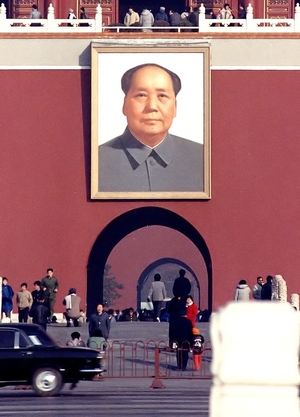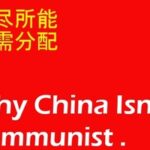Shortly after the death of Dr. Sun Yat-sen, leader of the Guomindang, or Kuomindang, in 1924, Chiang Kai-shek became his replacement. Sooner than later, communism rose to great heights in China. Led by Mao Zedong, Communist factions became great threats to the rule of Kai-shek and his Guomindang. Even during World War II, when the Japanese military took control of Manchuria, Chiang Kai-shek and Mao Zedong kept constant eyes on each other, even when forming a temporary alliance in order to eradicate their common enemy.
Eventually, after the war was over, Chiang and Mao continued their civil war, with Mao being forced to retreat his forces across a trail that had lasted over 6,000 miles, called the Long March, in which many of his men had died. Those who survived, however, assisted Zedong in solidifying a strong communist power which, in time, defeated the Guomindang, forcing Chiang to operate from Taiwan. With his newfound power, Mao officially established the People’s Republic of China.
Like Dr. Sun before him, Chiang was a nationalist, and therefore was against the May Fourth Movement, which was working to introduce Chinese citizens to western influences. Chiang and Sun believed that this movement was corrupting China’s youth. Chiang was also anti-capitalist, meaning that he was against those who were greedy and did not help the people or government despite their wealth. In fact, Chiang even confiscated money from the capitalists in order to pay for government funds. Chiang was also anti-communist, of course, and he punished communist workers for backing Mao and his plans to take over China, even using gangster connections to force these communist civilians to support him, though this support eventually faded. All in all, Chiang was thought of as a controversial leader, unlike his predecessor, who was generally liked, and did not see the Guomindang’s vision of a fully-independent China through entirely, but was still fully supported by other Guomindang and non-communist citizens.
Mao Zedong was the one to establish China’s current governmental scaffolding, the People’s Republic of China. Mao was a supporter of the “five-year plans”, which were enacted as soon as he was inducted in 1943. The five-year plans were used in order to develop the economy based on agriculture and industrial reforms, using money from wealthy citizens and well-off peasants in order to pay funds. Those who did not wish to pay funds were beaten to death in mass meetings organized by Mao and other communists, especially after the failure of the Great Leap Forward plan enacted alongside the five-year plans to increase agricultural strength in the 1960’s. This, of course, was one thing that occurred under the rule of Mao that not everyone agreed with, which proves that he too was a controversial leader, despite being supported in full by those who benefited by his rule-other communists. After Mao’s death in 1976, the government made leaps towards an improved People’s Republic of China which did not solely base itself off of communism beliefs.
Chiang Kai-shek and Mao Zedong were both entirely different and entirely similar in their own ways. Despite the controversy sometimes surrounding them, they should be respected as two highly influential leaders of China who have undoubtedly helped shape the nation into what is has become today. Both lead formidable forces which they had both set against and alongside each other throughout China’s rich modern history, and both have proven through the organization of their governments that they each had some sort of vision of a perfect nation. To this day, the People’s Republic of China is making leaps and bounds in society all thanks to the ideas of their past great leaders, such as Mao Zedong and Chiang Kai-shek of the Communist party and the Guomindang.



